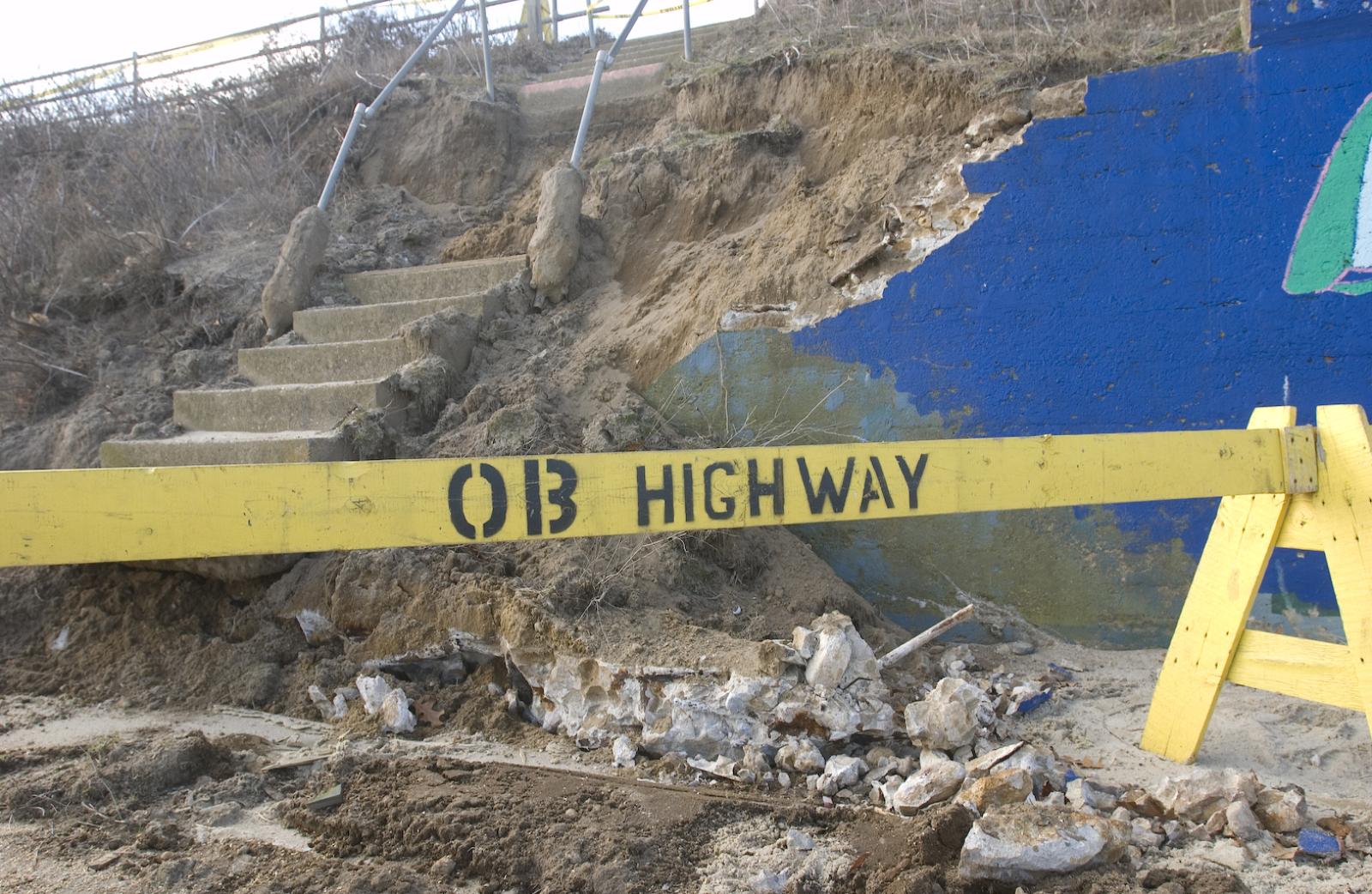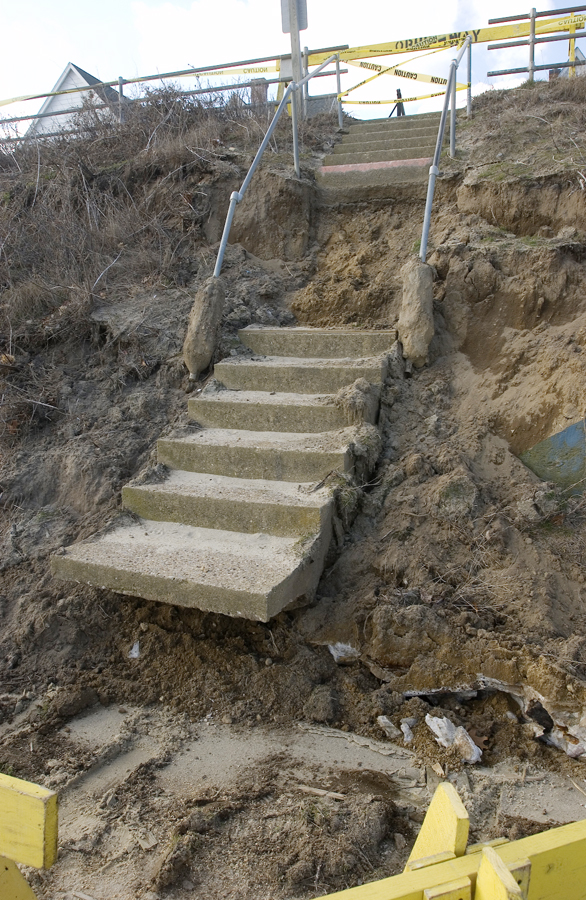A retaining wall estimated to weigh about 30 tons holding up a steeply sloping bank along Sea View avenue in Oak Bluffs collapsed suddenly Wednesday morning, sending town officials scrambling to repair the wall in time for the summer season and raising fresh questions about the structural integrity of certain parts of the town waterfront.
The collapsed wall was about seven feet high and one and a half feet wide and made of steel mesh and old-fashioned lime cement. It was located at what was formerly known as the pay beach adjacent to the snack bar and locker rooms that have stood at the foot of the beach for almost a century.
The wall had been listing toward the ocean for years, and town officials and residents agreed this week it was fortuitous that the structure collapsed in February instead of July or August, when the beach is jammed with sunbathers.
The town highway department early Wednesday morning applied for an emergency permit from the conservation commission to repair the collapsed wall. Work crews were busy Wednesday and Thursday removing debris and securing the area.
Highway superintendent Richard Combra Jr. said the wall likely collapsed after rain from a storm Monday night got behind the structure and froze when temperatures dipped below freezing Wednesday morning. The water then expanded, Mr. Combra theorized, and exerted pressure on the wall until it collapsed.
Mr. Combra said the remainder of the wall — totaling about 100 feet in length — will likely need to be removed to make sure the area is safe. He said town officials will probably consider a temporary solution for the summer season and then pursue a long-term solution in the fall.
Mr. Combra said he is confident the bank will be repaired in time for the summer season.
“Even when we remove the wall, we still have a situation where this bank will need to be stabilized. Our main concern is that we act quickly so we don’t lose a portion of the sidewalk [along Seaview avenue]. But I think we can secure this area so that is safe and ready [for the summer],” he said.
Conservation commission chairman Joan Hughes said the emergency certificate granted by the commission will allow the highway department to clean up the entire area and give them permission to remove the remaining portion of the wall. She said any changes to the area must be done to carefully to ensure the bank does not further collapse and take the sidewalk or even a portion of the road with it.
She said she has already spoken with several engineers about both a short and long-term solution.
“Right now we need some good advice and we need it fast,” Mrs. Hughes said. “There is no immediate danger of the sidewalk or [road] collapsing, but we need to come up with a plan that takes every possibility into account.”
Mrs. Hughes said the design of the wall likely played a part in its eventual failure. Because it is a straight retaining wall that does not have a lot of piling set into the bank there was essentially nothing holding it in place. Over the years, she said, water from storm runoff got behind the wall and slowly separated it from the bank, causing it to lean forward.
“I think it’s safe to say this wall would not be built the same way if it were designed today,” she said. “When this was put up it was just assumed that if it started to crack or fail, you just take it down and put up another one. It’s a miracle it stayed up as long as it did.”
Mrs. Hughes said the conservation commission is well aware of the failing infrastructure along the town beach and has been pursuing a plan to study and eventually repair the problem. At a special town meeting in December voters agreed to spend $65,000 for a survey to examine erosion and structural decay along the town waterfront.
And just this week, Mrs. Hughes said, the conservation commission signed a contract with Bailey Boyd grant consultants to start developing a request for proposals to repair the infrastructure and seek state and federal funds.
But with the collapse of the wall, Mrs. Hughes acknowledged, things just got more complicated.
“We hoped the walls were going to stay in place a little while longer . . . unfortunately that didn’t happen,” she said.
Mrs. Hughes said temporary solutions might include adding more soil to the base of the bank, thereby lessening the slope and strengthening the structure, or the use of erosion control mats that hold moisture and support vegetation growth.
John Lolley, one of the structural engineers consulted by the town, said the wall was never meant to last this long. He said the old-fashioned lime cement was largely made of beach sand and stone, and its high salt content was prone to deterioration. He said the steel mesh that held the wall in place was also vulnerable to rust.
“It was not designed to anywhere near the level it needed to be to stand up to the pressure of that bank,” Mr. Lolley said.








Comments (2)
Comments
Comment policy »